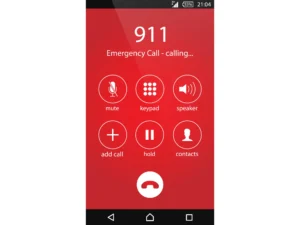 What You Need to Know When Making a Cellular 9-1-1 Call:
What You Need to Know When Making a Cellular 9-1-1 Call:
Cellular telephones differ from traditional home or business telephone services in a number of ways. By educating yourself with the information provided, you will know when to call 9-1-1 and what to expect.
Can I dial 9-1-1 from my cellular telephone?
YES – The Federal Communications Commission (FCC) issued rules requiring cellular providers to provide access to 9-1-1 to all wireless phones, even those that are not subscribed to or supported by a specific carrier.
Tips for Making a Cellular 9-1-1 Call:
When making a cellular 9-1-1 call, the Call-taker may not automatically know your location. You should be prepared to provide the following information.
- If the emergency is at a residence or business, please provide
- Street Number, Street Name, and City/Town
- If the emergency is on a highway, please provide the following:
- Street/Highway Name and direction of travel (North, South, East, or Westbound)
- Nearest intersecting Street Name
- Mile Marker, Exit Number, or Landmarks
- The telephone number you are calling from
- What is the nature of the Emergency
- Your name
Answer all other questions asked by the 9-1-1 Call-taker. The 9-1-1 Call-taker is required to ask these questions. The information you provide will assist the 9-1-1 Call-taker in determining the appropriate emergency service providers to send.
Will the 9-1-1 Call-taker know where I am?
Cellular telephones do not provide the same information to the 9-1-1 Call-taker as traditional telephone service. Depending on the technology and the type of cellular telephone being used, the 9-1-1 Call-taker may only know one of the following:
- Location of the cellular site that received your call and your telephone number. This is known as a Phase 1 call. A Phase 1 call only provides the 9-1-1 Call-taker with the cellular site and the general coverage area of the site. You should be located somewhere within this coverage area, which could cover multiple towns.
- The approximate latitude and longitude of your cellular telephone. This is known as a Phase 2 call. Phase 2 calls still have limitations based on the technology used by your cellular provider, which can affect the accuracy.
This is why you must be prepared to give the 9-1-1 Call-taker your location.
 Unused Celular Telephones are Not Toys:
Unused Celular Telephones are Not Toys:
We have dealt with multiple children that were given unused cellular telephones as toys. In one case, we received more than 60 calls from the same child. This incident took approximately 2 hours and required the Police Officer to check multiple locations before the child was located. Amazingly, in all these cases, the parents recharged the telephone for the children. These telephones are still able to call 9-1-1. Please do not give an operational cellular telephone to your children as a toy.
